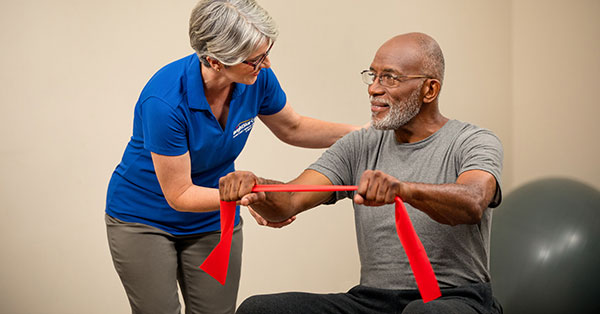Parkinson’s disease greatly affects clients’ lives every day, causing symptoms such as:
- Rigid arms and legs
- Muscle tremors
- Difficulty with walking and balance
 About 60,000 Americans are diagnosed with Parkinson’s disease every year, and about 1 million Americans currently have the neurological condition. Though the Parkinson’s disease can be tough to live with, careful medication management and regular exercise can give patients and caregivers a better quality of life.
About 60,000 Americans are diagnosed with Parkinson’s disease every year, and about 1 million Americans currently have the neurological condition. Though the Parkinson’s disease can be tough to live with, careful medication management and regular exercise can give patients and caregivers a better quality of life.
How medication can help
Parkinson’s disease affects nerve cells in the brain that produce a chemical called dopamine. Without enough dopamine, a person’s movements are less controlled, and the muscles are more rigid, which can cause problems with:
- Chewing and swallowing food
- Speaking
- Walking and other complex movements
Medication can help correct this problem. A commonly prescribed Parkinson’s disease drug is carbidopa levodopa (Sinemet), and it’s like a lifeline for many people with the disease. This drug promotes the highest functionality at peak hours. It’s important to plan activities accordingly because the effects wear off over the course of the day.
Medication management is both a science and an art. It takes time to find just the right dose to maximize your loved one’s ability to move and minimize the related side effects. We help many of our home care clients with medication management, such as taking medication at the appropriate times and, in most states, administering it. Your loved one’s nurse will watch for side effects and stay in contact with their healthcare team.
The importance of regular exercise
Exercise plays a vital role in balance, mobility, and normal activity, in addition to protecting against further neurological damage.
Caregivers and clients should weave regular exercise into plans of care for clients with Parkinson’s disease during times when their medications are most effective. These fun activities are beneficial for joints, muscles, and nerves:
- Dancing
- Swimming
- Walking or jogging
- Yoga or stretching from a bed or chair
- Stationary biking
Riding a stationary bike is a safer option than a standard on-road bicycle, because it helps protect against falling if your loved one were to have a tremor during their ride. Many clients use modified stationary bikes that just include a wheel, pedals, and a stabilizer bar on their bed or the floor that lets them pedal while seated.
Living at home with Parkinson’s disease can be tough, but it’s not impossible. Finding the right balance of medications and regular activity can help your loved one live a vibrant, healthy life. The following resources have great information about Parkinson’s disease for both people who have the condition and their families:
- American Parkinson Disease Foundation
- Michael J. Fox Foundation
- National Institute of Neurological Disorders and Stroke
- Parkinson’s Foundation
- Parkinson’s Resource Organization
Call 866-618-7827 or contact a BrightStar Care® home care agency near you to learn more about our in-home care services for clients with Parkinson’s disease.
